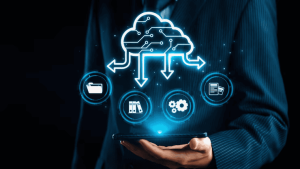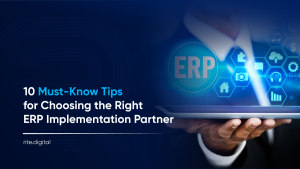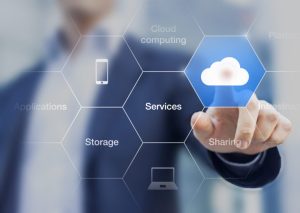When planning for IT modernization, clearly define how it will support business goals, whether it involves improving customer experience, streamlining operations, or unlocking new revenue opportunities. A strategic alignment helps ensure the investment delivers value by enhancing competitiveness and driving growth. Additionally, understanding the expected ROI helps businesses balance short-term cost savings with long-term value, such as increased agility and innovation.
A thorough evaluation of legacy systems helps identify which ones should be retained, upgraded, or replaced during modernization. This involves creating a complete inventory of current IT assets and assessing their relevance, efficiency, and scalability. Legacy systems often present integration challenges with modern platforms, such as cloud environments or advanced analytics tools. So, it’s important to consider how these systems will fit into the new IT landscape. Evaluate and decide whether to modernize, migrate, or decommission each system to ensure a smooth transition.
Only some organizations are fully prepared to migrate all workloads to the cloud. You need a clear cloud strategy, whether moving entirely to the cloud, maintaining a hybrid cloud/on-premise infrastructure, or adopting a multi-cloud approach. Assessing which workloads are cloud-ready and prioritizing their migration ensures a smooth transition without overwhelming your IT environment. Consider your security, compliance, and operational needs when determining your cloud readiness.
Effective data management is critical, and data must be carefully migrated to ensure accuracy, security, and availability. This requires implementing robust data governance practices to maintain data quality throughout the transition. Data migration should minimize disruption while helping you fully leverage your data in the modernized environment. Moreover, structure your data properly to facilitate advanced analytics, reporting, and decision-making in the new system.
IT modernization services require specialized skills that may not exist within your current workforce. Emerging technologies like cybersecurity, cloud computing, and artificial intelligence require expertise that organizations need to develop internally through training or acquire through hiring. Additionally, IT modernization requires a cultural shift, embracing agile methodologies and continuous improvement mindsets. Investing in workforce development and fostering an innovation-oriented culture can help you fully realize the benefits of modernization.
While modernization can bring long-term cost savings through optimized infrastructure, reduced maintenance, and increased efficiency, the initial investment can be significant. It’s important to balance upfront expenses, such as new software, hardware, training, and migration services, with long-term financial benefits. Additionally, organizations should be aware of hidden costs that may arise, such as unexpected integration issues, licensing fees, and maintenance of legacy systems during the transition.
Evaluate different technology stacks and platforms that meet your business needs and offer the flexibility to scale and adapt to future growth. Select vendors who provide robust support, reliable service, and a commitment to innovation. Vendor roadmaps should align with your company’s modernization goals to ensure long-term viability. The wrong vendor or technology can result in costly rework or limit your ability to innovate.
Executive buy-in is essential for driving the initiative forward and ensuring the necessary resources and support are available. Ensure that your internal team is prepared for upcoming changes, which includes addressing potential resistance to new technologies and providing the right training and support to ensure smooth adoption. Engaging users early and communicating the benefits of modernization will help ease the transition and ensure widespread acceptance.
Modernizing IT systems enhances your ability to scale operations in response to growth or market changes. A modern IT environment should be designed for scalability, enabling the business to increase capacity, add new services, or expand geographically without requiring extensive re-engineering. Additionally, ongoing performance monitoring helps identify areas for optimization and ensures that the new systems operate efficiently. Building scalability and performance monitoring into the modernization strategy helps future-proof your IT environment and supports long-term business goals.
Adopt technologies that not only meet your needs today but also have the potential to integrate emerging technologies. Create a flexible, scalable infrastructure supporting future business objectives and technological advances. Future-proofing your IT environment ensures that your organization can continue to innovate and remain competitive for technological advancements.






